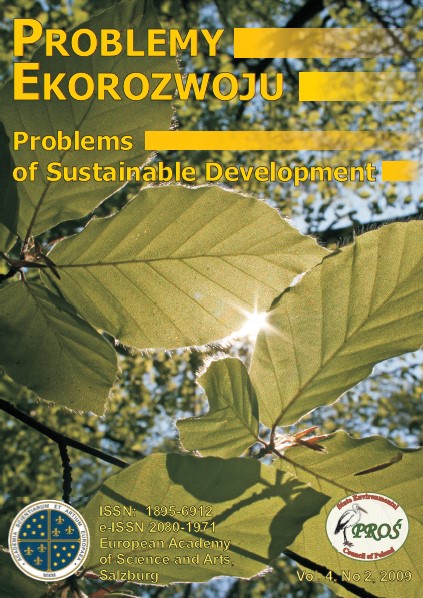Przyszłość systemu ekologicznego Polski
Tadeusz J. Chmielewski
Uniwersytet Przyrodniczy w Lublinie, Zakład Ekologii Krajobrazu i Ochrony Przyrody, Lublin, Poland
E-mail: tadeusz.chmielewski@up.lublin.pl
Abstract
Areas of the utmost natural and landscape values are subject to different forms of protection. It is generally believed, that the system of protected areas should ensure ecological balance on the regional and national scale. In order for this to happen, the system should be adequately vast, rich and varied, and not subject to degradation. At the end of 2006 the system of protected areas constituted 32,1% of the area of Poland. Despite this fact, the condition of ecological resources of the country is seriously threatened and is diminishing rapidly. Moreover, a lot of protected areas do not efficiently realize the tasks assigned to them. Contrary to a frequently repeated slogan about the improving condition of Poland’s environment, a lot of data proves, that, with the end of the 90s, we entered the stage of environmental loading increase and subsequent degradation of country’s ecological system. The main tendencies observed in the changes in natural environment are: drainage of moist areas, acceleration of surface runoff and a decrease in water abundance of rivers, diminishing of biologically active surface, fragmentation of landscape, thickening of ecological barriers net and spatial isolation of ecosystems, as well as, a decrease in biological and landscape diversity. In the face of such pressure, it is necessary to recognize nature protection and strengthening of the ecological structure of Poland as one of the key elements of new spatial planning policy of the country.
Key words: National ecological system, environmental transformation, spatial planning policy
Streszczenie
Obszary o niemal naturalnym krajobrazie są przedmiotem różnych form ochrony przyrody. Zakłada się, że system obszarów chronionych powinien zapewnić równowagę ekologiczną w skali regionalnej i ogólnokrajowej. Aby tak się stało, system musi być odpowiednio duży, zróżnicowany i nie podlegać degradacji. Z końcem 2006 r. system obszarów chronionych w Polsce obejmował 32,1 % powierzchni kraju. Pomimo tego, stan zasobów ekologicznych jest poważnie zagrożony i gwałtownie się kurczy. Co więcej, wiele obszarów chronionych nie spełnia swej funkcji. W przeciwieństwie do często powtarzanych sloganów o poprawiającym się stanie środowiska w Polsce, wiele danych pokazuje, że wraz końcem lat 90. rozpoczął się okres wzrostu presji na środowisko i degradacji krajowego systemu ekologicznego. Główne obserwowane tendencje to: drenaż obszarów podmokłych, przyspieszenie spływu powierzchniowego, zmniejszenie zasobności wód w rzekach, zmniejszenie powierzchni aktywnej biologicznie, fragmentacja krajobrazu, narastanie barier ekologicznych i przestrzennej izolacji ekosystemów, a także zmniejszenie biologicznej i krajobrazowej różnorodności. Wobec tych zmian, niezbędne jest uznanie ochrony przyrody i systemu ekologicznego Polski za jeden z kluczowych elementów nowej polityki przestrzennej kraju.
Słowa kluczowe: krajowy system ekologiczny, przekształcenia środowiskowe, polityka planowania przestrzennego
Problemy Ekorozwoju 4(2)2009: 73-82
